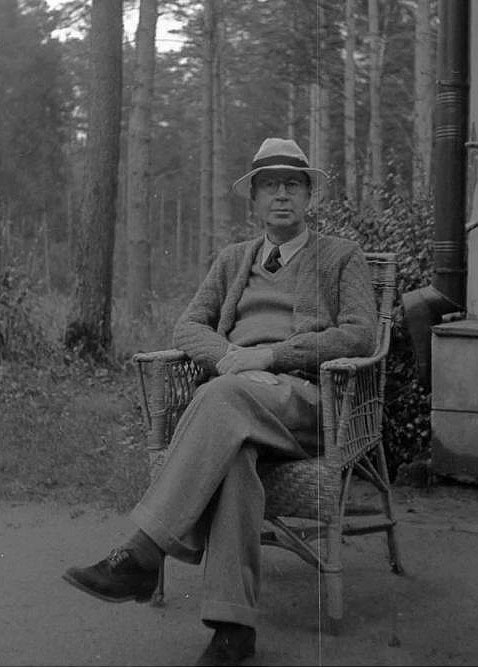
Sergei Prokofiev spent the summer of 1944 at a large country estate provided by the Union of Soviet Composers as a refuge from the war and as a kind of think-tank. Prokofiev arrived early in the summer and found that his colleagues included Glière, Shostakovich, Kabalevsky, Khachaturian and Myaskovsky — summer camp for the most distinguished Soviet composers of the time.
Although Ivanovo, as the retreat was called, often was referred to as a rest home, there was little leisure once Prokofiev moved in. He maintained a rigorous daily schedule — as he had all his life — and began to impose it on the others as well. “The regularity with which he worked amazed us all,” Khachaturian later recalled. Prokofiev ate breakfast, marched to his studio to compose and scheduled his walks and tennis games by the clock. In the evening he insisted the composers all get together to compare notes, literally. Prokofiev was delighted, and clearly not surprised, that he usually had the most to show for his day’s work.
 It was a particularly productive summer for Prokofiev; he composed both his Eighth Piano Sonata and the Fifth Symphony (which the CSO will perform May 31 and June 3, and will be the focus of a Beyond the Score concert June 4 with the Civic Orchestra) before he returned to Moscow. The sonata is prime Prokofiev and often played, but the symphony is perhaps the best known and most regularly performed of all his works. It had been 15 years since Prokofiev’s last symphony, and both that symphony and the one preceding it had been byproducts of theater pieces: the Third Symphony is musically related to the opera The Fiery Angel, and the Fourth to the ballet The Prodigal Son. Not since his Second Symphony, completed in 1925, had Prokofiev composed a purely abstract symphony, or one that he began from scratch.
It was a particularly productive summer for Prokofiev; he composed both his Eighth Piano Sonata and the Fifth Symphony (which the CSO will perform May 31 and June 3, and will be the focus of a Beyond the Score concert June 4 with the Civic Orchestra) before he returned to Moscow. The sonata is prime Prokofiev and often played, but the symphony is perhaps the best known and most regularly performed of all his works. It had been 15 years since Prokofiev’s last symphony, and both that symphony and the one preceding it had been byproducts of theater pieces: the Third Symphony is musically related to the opera The Fiery Angel, and the Fourth to the ballet The Prodigal Son. Not since his Second Symphony, completed in 1925, had Prokofiev composed a purely abstract symphony, or one that he began from scratch.
Although it was written at the height of the war, Prokofiev’s Fifth Symphony isn’t a wartime symphony in the traditional sense — not in the vivid and descriptive manner of Shostakovich’s Seventh, composed during the siege of Leningrad and written, in Carl Sandburg’s words, “with the heart’s blood,” or his Eighth, which coolly contemplates the horrors of war. Prokofiev’s Symphony No. 5 is intended to glorify the human spirit: “praising the free and happy man, his strength, his generosity, and the purity of his soul.”
In its own way, this outlook makes it an even greater product of the war, because it was designed to uplift and console the Soviet people. “I cannot say I chose this theme,” Prokofiev wrote. “It was born in me and had to express itself.” Nonetheless, such optimistic and victorious music cheered the Russian authorities; it might well have been made to order. In his 1946 autobiography, Prokofiev writes: “It is the duty of the composer, like the poet, the sculptor or the painter, to serve the rest of humanity, to beautify human life and to point the way to a radiant future. Such is the immutable code of art as I see it.”
It also was the code of art that Soviet composers were expected to embrace during the war, but Prokofiev couldn’t have written a work as powerful and convincing as his Fifth Symphony if he truly did not believe those words.
The Fifth Symphony would inevitably be known as a victory celebration. Just before the first performance, which Prokofiev conducted, word reached Moscow that the Russian army had scored a decisive victory on the Vistula River. As Prokofiev raised his baton, the sound of cannons was heard from the distance. Buoyed by both the news and the triumphant tone of the music, the premiere was a great success.
It was the last time Prokofiev conducted in public. Three weeks later he had a mild heart attack, fell down the stairs in his apartment and suffered a slight concussion. Although he recovered his spirits, and eventually his strength and creative powers as well, Prokofiev continued to feel the effects of the accident for the remaining eight years of his life.
The first movement of the Fifth Symphony is intense and dramatic, but neither aggressive nor violent, like much of the music written at the time. It’s moderately paced (Prokofiev writes andante) and broadly lyrical throughout. The scherzo, in contrast, is quick and insistent, touched by a sense of humor that sometimes reveals a sharp, cutting edge. The third movement is lyrical and brooding, like much of Prokofiev’s finest slow music. After a brief and sober introduction, the finale points decisively toward a radiant future.
Phillip Huscher is the program annotator for the Chicago Symphony Orchestra.
PHOTO: Prokofiev at Ivanovo, summer of 1944.